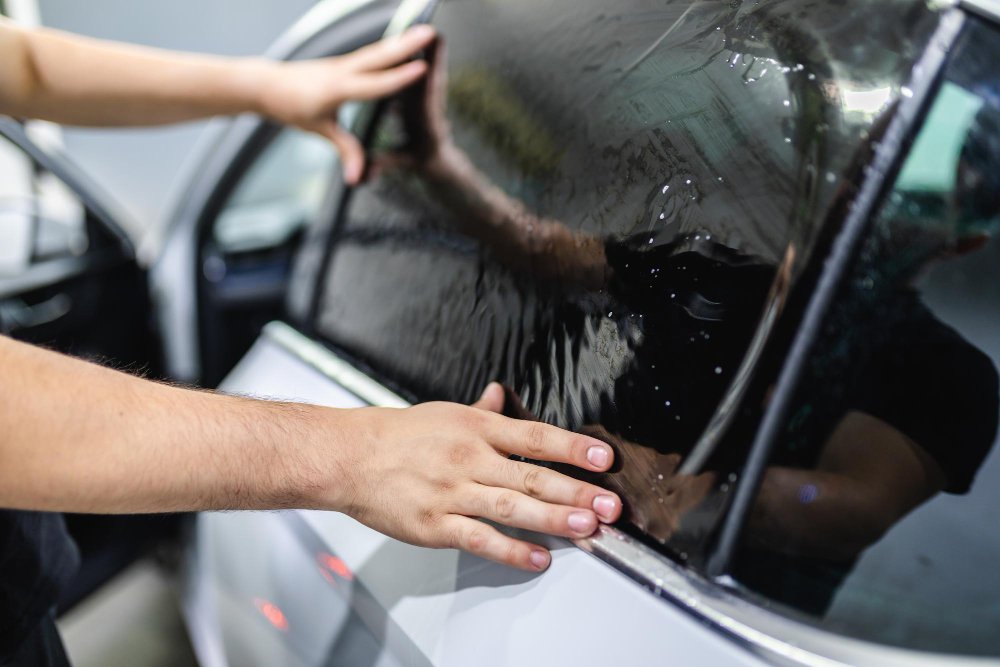Premier Auto Window Tinting Solutions in Your Location
Wiki Article
Home Window Tinting Laws and Guidelines: What You Need to Know Prior To Tinting Your Car
Prior to continuing with home window tinting for your vehicle, it is vital to acquaint on your own with the diverse laws and standards that control this method throughout different states. These policies determine the permissible degrees of color darkness, commonly gauged by visible light transmission (VLT) portions, and include specific terms for front windshields intended at guaranteeing roadway security.Review of Window Tinting Laws
Home window tinting laws are frequently based on variation throughout different territories, reflecting neighborhood regulations and security factors to consider. These regulations dictate the permitted degrees of tint darkness and reflectiveness on car windows, making certain that drivers maintain ample presence while additionally safeguarding against damaging UV rays and heat.Most policies classify window tinting based upon the Visible Light Transmission (VLT) percent, which indicates the amount of light that can travel through the window. Normally, lower VLT percents symbolize darker tints. Legislations typically set apart in between the front, side, and rear windows, with more stringent limitations used to the front windscreen to boost safety and security for both the chauffeur and other road users.
Compliance with home window tinting regulations is essential, as infractions can result in penalties, compulsory elimination of the tint, and possible rises in insurance coverage premiums. It is necessary for automobile owners to acquaint themselves with local regulations before continuing with home window tinting installations.
State-by-State Tint Rules
Comprehending the certain window tinting policies in each state is crucial for car proprietors seeking to abide by the law. Each state in the united state has developed its very own set of rules governing window tinting, which can vary considerably. These policies often dictate the allowed degrees of color darkness, the sorts of home windows that can be tinted, and any medical exceptions that may apply.As an example, states like California have stringent limitations on color darkness for front home windows, while others, such as New Mexico, may enable darker colors. Additionally, certain states mandate certain visibility portions for various home windows, consisting of the windshield, front side home windows, and back windows. It is important for auto proprietors to familiarize themselves with their state's legislations to prevent possible penalties or penalties.
In addition, some states might call for an accreditation sticker label to be positioned on tinted windows, indicating compliance with state regulations. Failing to comply with these regulations not just takes the chance of legal effects however can likewise impact safety and security and exposure while driving. Therefore, lorry proprietors should conduct complete study or consult local authorities to guarantee complete understanding and conformity with state-by-state tint guidelines.
Allowed Color Kinds and degrees
Lots of automobile owners might be stunned to discover that allowed color levels and types differ commonly throughout various states. Each state has actually established its very own regulations regarding the allowable darkness and reflectivity of window tint, often gauged by Visible Light Transmission (VLT) percentages. VLT refers to the amount of light that can travel through the colored windows; therefore, a lower percentage indicates a darker tint.
Furthermore, the kinds of color materials permitted can differ, with some states prohibiting metal or mirror-like surfaces. It is necessary for vehicle proprietors to familiarize themselves with their state's details laws to make sure conformity. Non-compliance can result in fines, mandatory elimination of the color, or various other legal repercussions, making it vital to comprehend these laws before proceeding with installment.
Medical Exemptions for Tinting
While not all states give allocations for medical exemptions relating to window tinting, those that do acknowledge the need for specific people to improve visibility and convenience due to clinical problems. Different clinical problems, such as lupus, skin cancer, and certain eye disorders, can render people particularly conscious sunshine. These individuals might need darker colors to shield themselves from harmful UV rays and glow.
It is essential to note that despite having a medical exemption, there may still be constraints on the degree of tint allowed. Compliance with state regulations ensures that individuals are both safeguarded and within legal limitations. Those considering medical exceptions ought to call their local Division of Motor Vehicles or equal authority to recognize the procedures and demands necessary to make an application for an exemption properly.
Penalties for Non-Compliance
Failing to follow window tinting laws can result in substantial penalties, which vary by state. Police are empowered to provide citations for cars that do not adhere to the defined tinting policies. These penalties generally include penalties, which can range from moderate total up to a number of hundred dollars, depending on the severity of the offense and the state in inquiry.In some territories, repeated offenses might lead to intensifying penalties or added penalties, such as compulsory court looks. Moreover, non-compliance may necessitate the elimination of illegal tinting, usually at the proprietor's cost. In severe instances, regular wrongdoers might face suspension of their car registration till conformity is achieved.
Furthermore, insurance implications might emerge from getting numerous citations for home window color infractions. Insurance companies might watch such offenses as an indication of riskier actions, potentially causing increased premiums or trouble in coverage.
To avoid these penalties, it is crucial for car owners to acquaint themselves with their local home window tinting regulations and ensure that their car complies (Window Tinting). This aggressive approach not just stays clear of legal implications however additionally promotes roadway safety
Conclusion

The majority of guidelines classify home window tinting based on the Visible Light Transmission (VLT) percentage, which shows the quantity of light that can pass via the window. Conformity with home window tinting regulations click to read is vital, as infractions can result in penalties, compulsory elimination of the color, and possible increases in insurance coverage costs.Understanding the particular window tinting regulations in each state is vital for lorry proprietors seeking to comply with the regulation. These laws typically determine the permitted levels of color darkness, the types of windows that can be tinted, and any type of medical exceptions that may apply.
For instance, states like The golden state have strict constraints on color darkness for front home windows, while others, such as New Mexico, might permit darker colors.
Report this wiki page